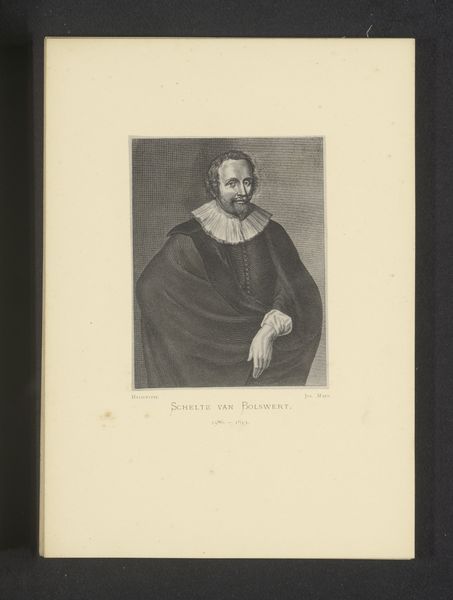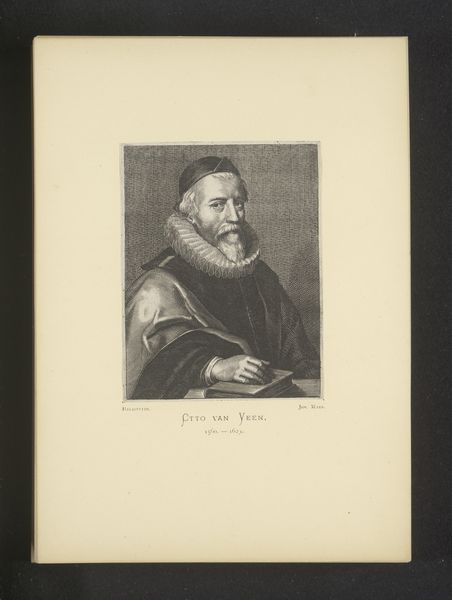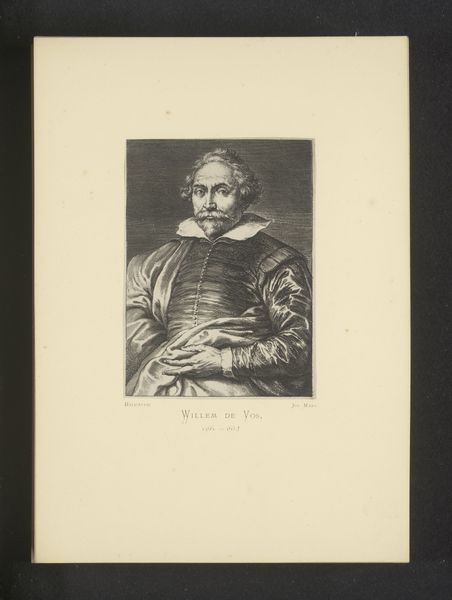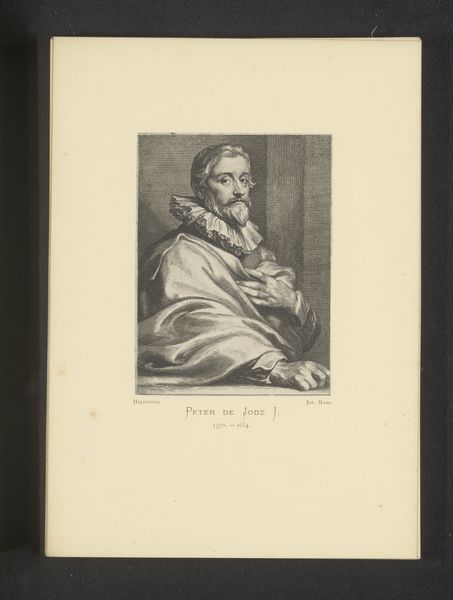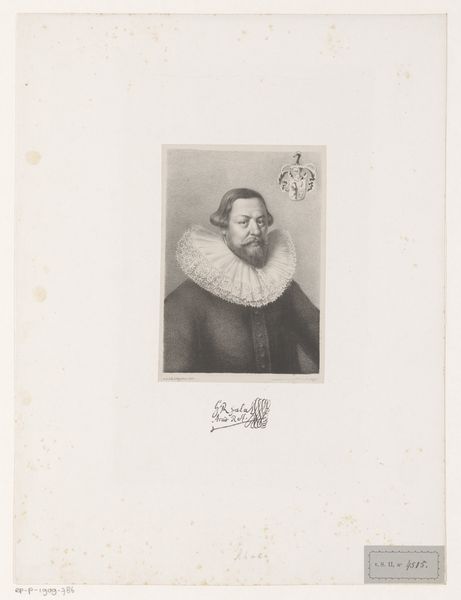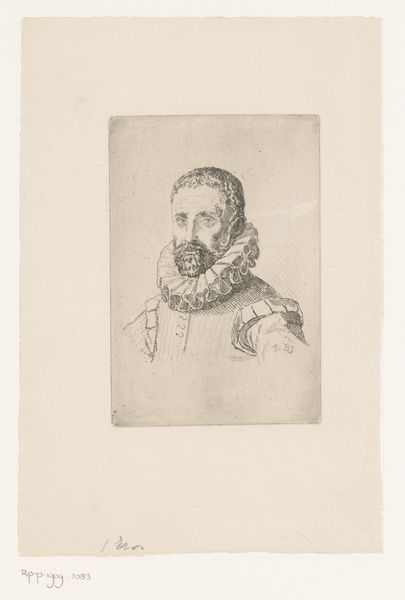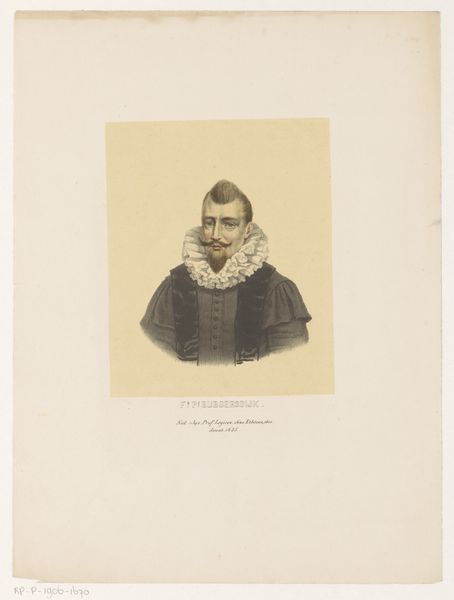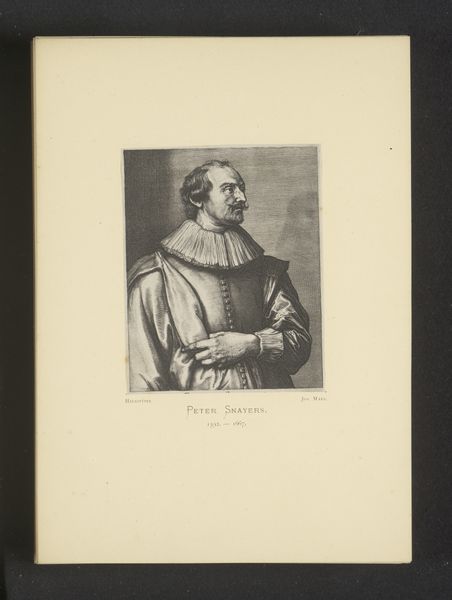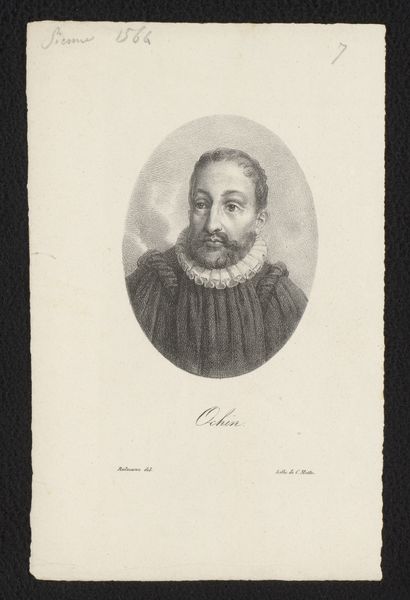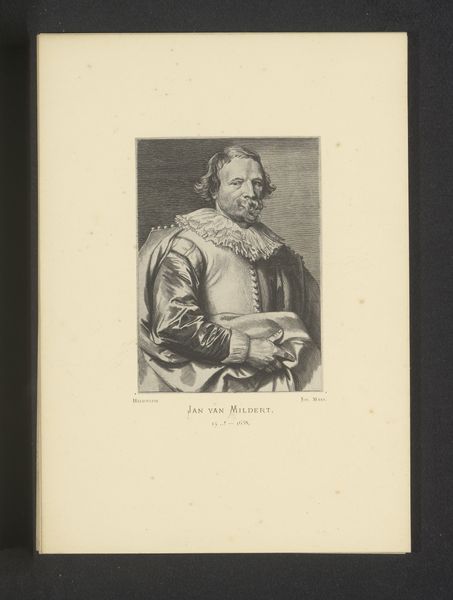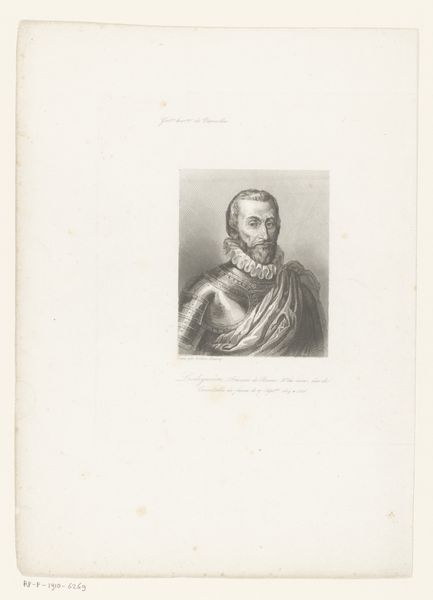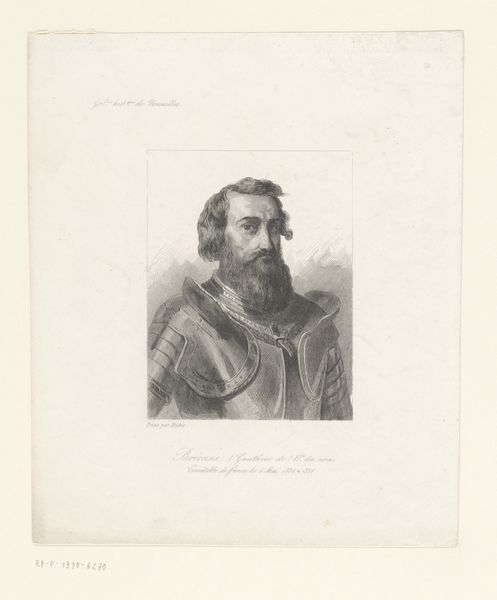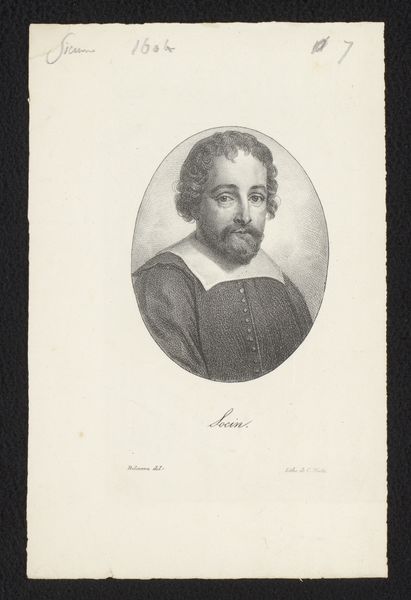
Reproductie van een gravure van een portret van Tobias Verhaecht door Cornelis van Caukercken en Otto van Veen before 1877
0:00
0:00
Dimensions: height 114 mm, width 90 mm
Copyright: Rijks Museum: Open Domain
Curator: Let’s discuss this intriguing print; it’s a reproduction of an engraving portraying Tobias Verhaecht. The original work was crafted before 1877. Editor: My immediate impression is of somber formality, offset by the tactile texture of the engraved lines—it really makes you consider the labour involved in the printmaking. Curator: Indeed. Engravings such as these played a crucial role in disseminating portraits and information during that period. It was a mode of visually constructing public figures. Verhaecht himself was a significant artist. Editor: Exactly, and look at the stark contrast achieved purely through incising the material. What tool was used? And how long would this take? Think about the engraver’s craft knowledge being circulated along with the image. Curator: These engravings acted as visual documentation, defining the legacy and projecting the social standing of people like Verhaecht across Europe and the world. Editor: Yes, each print becomes a commodity, an accessible version of prestige. But to create it, it all depends on the engraver's skilled labor, how they handled those tools to get it exactly right, this gives value and significance beyond just reproducing a face. Curator: A portrait captured for posterity. And it showcases Baroque sensibilities, even within the reproducible format of printmaking. The grand gesture, that distinctive ruff… It’s all carefully considered to promote a specific image. Editor: That ruff is everything. Imagine the person hours it took to create, starch, and maintain such a complex piece of fabric! It’s pure theatre but the material screams power and access. Curator: Ultimately, works like these give us an intriguing window into the socio-political power dynamics and artistic sensibilities that once prevailed. Editor: Right, but they also remind us of the physical processes, skills, and economic relations necessary to produce the images we consume, even today. Very insightful.
Comments
No comments
Be the first to comment and join the conversation on the ultimate creative platform.

